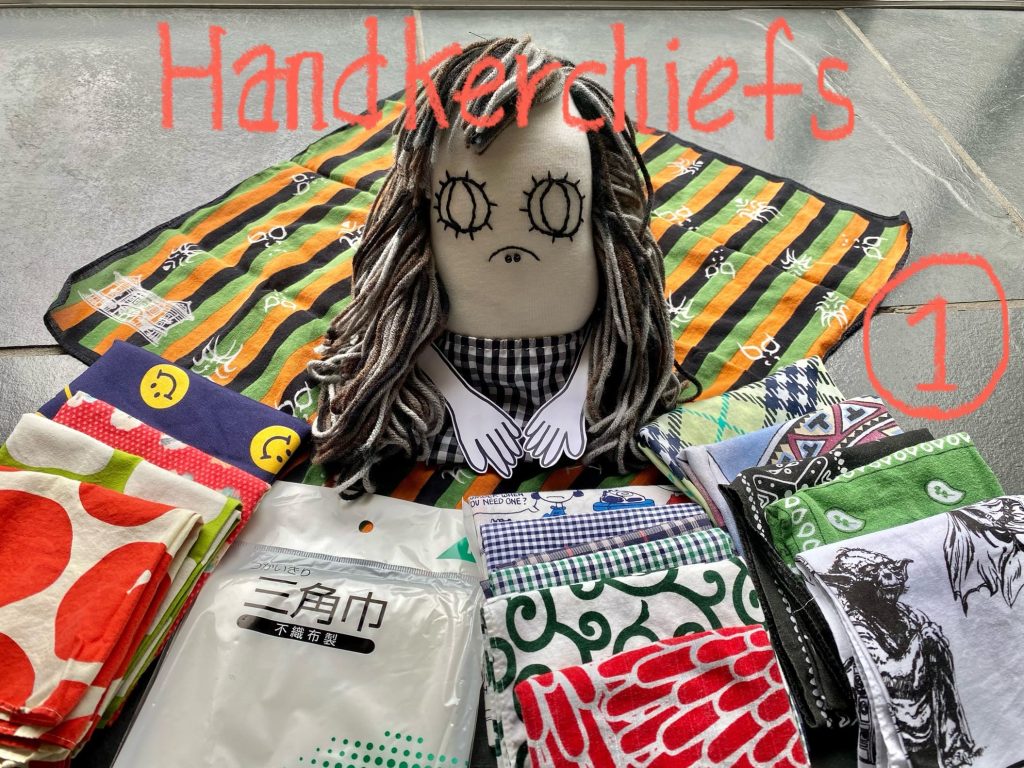
Why do we need a handkerchief for emergency situations?
A handkerchief is a valuable, multi-purpose tool in an emergency!
How does a handkerchief help me in an emergency?? Is it just a mask??
I have a bandana. Is that ok?
Which one is better to have in an emergency? a handkerchief? or a towel?
First, do you have a handkerchief??
Nowadays, how many people know about using a handkerchief or bandana in their daily life, for anything other than fashion? There are many ways to use a handkerchief, and you might want to have one in your pocket, all the time, after you read this post.
In Japan, elementary schools require students to carry a handkerchief, every day, for personal hygiene: specifically for students to dry their hands after washing. My teachers in Japan always used to say, “Don’t drop water on the floor!” They said this for safety reasons; a wet floor is slippery and dangerous. When my schools in Japan held fire drills, they always announced, “Cover your mouth with your handkerchief.” I was scared to be without my handkerchief, and even to this day, I don’t forget to carry it.
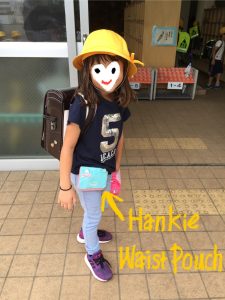
Handkerchiefs are reusable and washable, and therefore very eco-friendly. Right? They will help you in emergencies, in many ways (which I’ll get to in a minute).
Since they’re so useful, and so simple, why don’t you carry a handkerchief in your pocket??
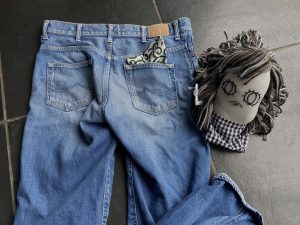
About handkerchiefs
There are many kinds of handkerchiefs. You should appreciate that the handkerchief is not just a piece of cut fabric. (Of course, if your handkerchief actually is just a piece of cut fabric, there is nothing wrong with that.) When you have a specific purpose in mind for your handkerchief, you will know that it is more than just a scrap of fabric.
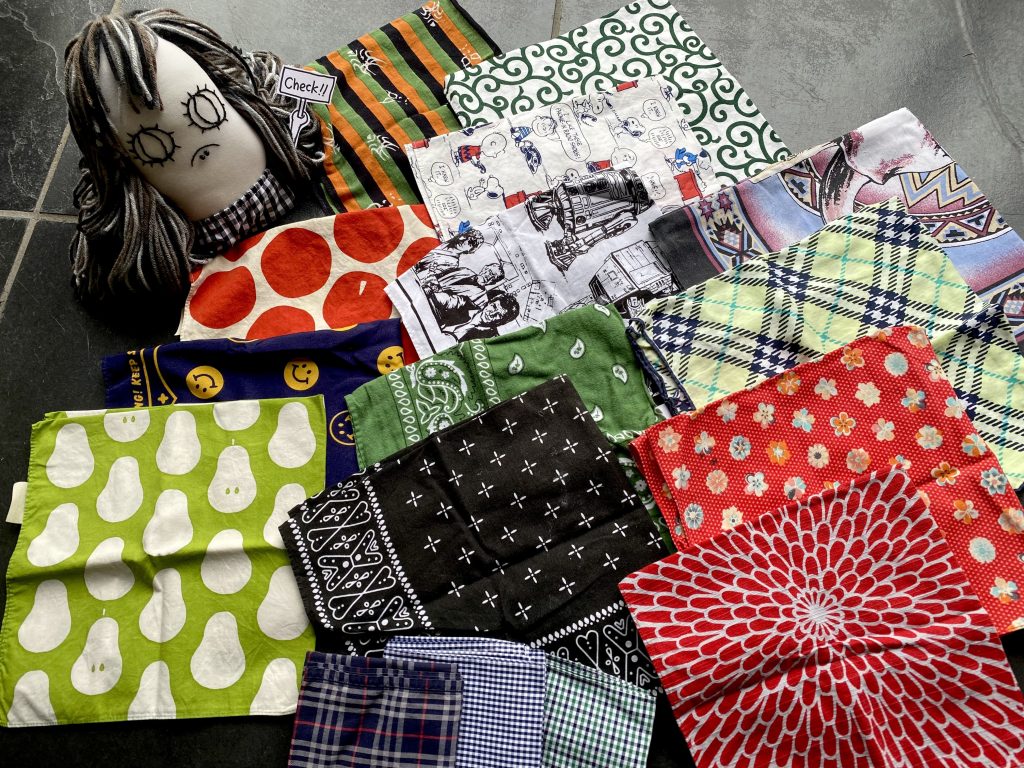
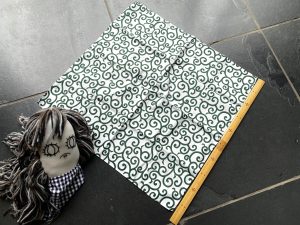
I recommend trying to cover your mouth with your handkerchief or bandana and also trying to tie it to make a mask.
If it’s too small, find a lager size.
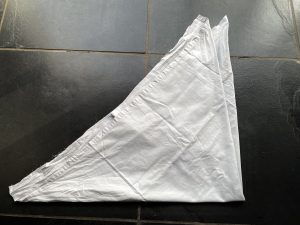
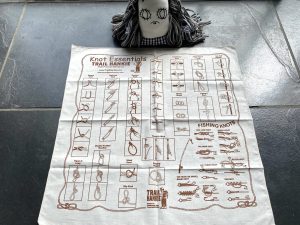
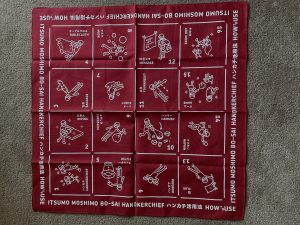
What are the uses for a handkerchief, in an emergency?
How to use a handkerchief in an emergency?
★ Mask
Tie a handkerchief around your face to protect from dust, smoke, cold, wind, and pollen. The handkerchief helps filter out a significant amount of air pollution. Try to breathe clean, good quality air as much as you possibly can, to avoid breathing problems, later on.
Don’t forget that the mask is not only protecting you, but also protecting others. For example, it helps prevent your coughs and sneezes from spreading germs. (Similarly, if you wear your bandana as a hair net, like a do-rag, it will protect against your hair falling into the food that you’re cooking.)
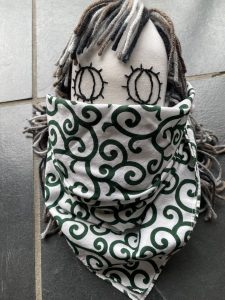
Making your mask wet will help you if you’re in a very dry place. Just pour a little water onto your handkerchief.
You can buy wet masks in Japan (check out KOBAYASHI Pharmaceutical), but we can make a wet mask by ourselves.
★ Bandage
You can wrap your handkerchief around a wound, as a bandage. If you have water, rinse the wound first, and then wrap it.
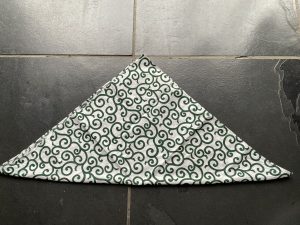
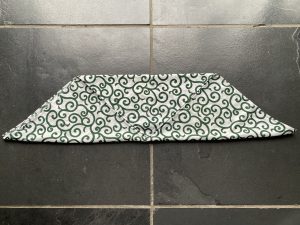
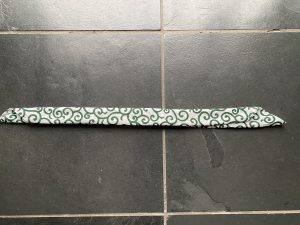
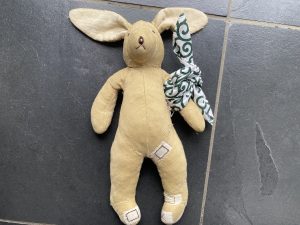
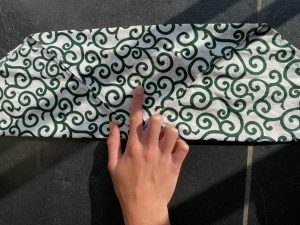
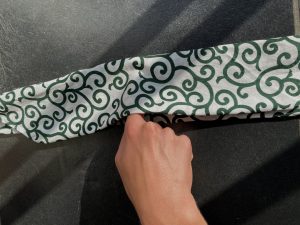
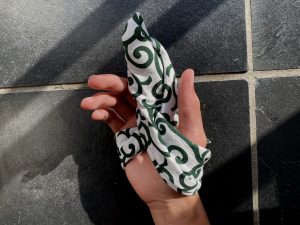
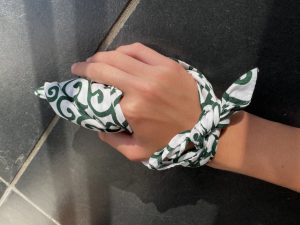
★ Sling
You can fashion a sling out of a large handkerchief to support and immobilize an injured arm.
Start with one big handkerchief.
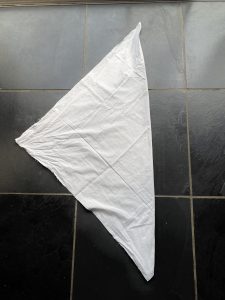
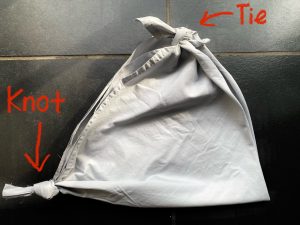
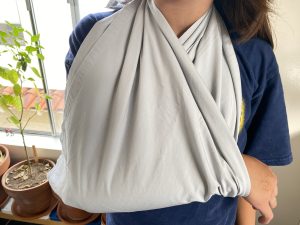
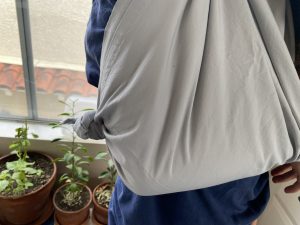
Or tie two small handkerchiefs together, like this.
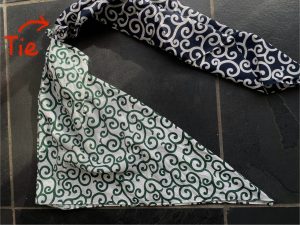
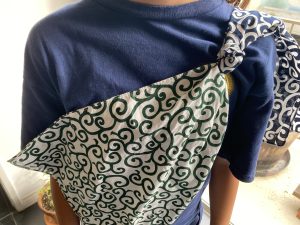
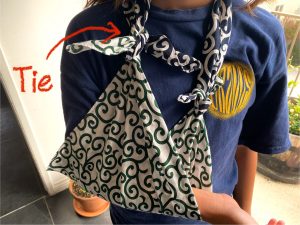
★ Tourniquet
Be careful!! Use a tourniquet only as a last resort to stop bleeding. First, try to apply strong pressure, then if the bleeding cannot be stopped and the situation is life-threatening, only then should you resort to using a tourniquet. Tourniquets can lead to tissue damage, nerve damage, muscle damage, and even limb loss. (Tourniquets.org)
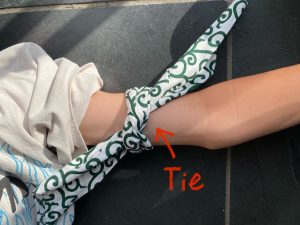
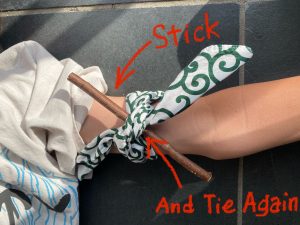

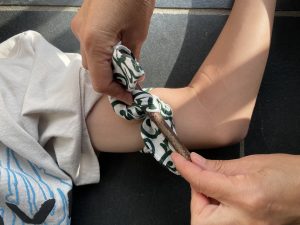
In Japan, we have SANKAKUKIN (三角巾: Triangle cloth) which is a handkerchief that is already pre-folded or cut into a triangle shape. It’s a common style of handkerchief often found in Japanese first aid kits.
白十字 (Hakujuji)
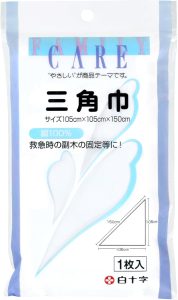
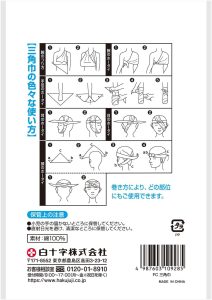
There are many more ways to use your handkerchief. Check out my next post for more!!
See you next time.
Remember, “Protect your life by yourself” (自分の命は自分で守る). You need to survive first, and then you need your emergency supply. No matter how well you prepared your emergency supplies, if you die, then all of your preparations will have been for nothing. First and foremost, keep your health up all the time. Build your stamina so that if you need to, you can evacuate as quickly as possible. Stay healthy.
Pingback: A Handkerchief for Emergencies (6) #83 – Goriyama
Pingback: A Handkerchief for Emergencies (5) #82 – Goriyama
Pingback: A Handkerchief for Emergencies (4) #81 – Goriyama
Pingback: A Handkerchief for Emergencies (3) #80 – Goriyama
Pingback: A Handkerchief for Emergencies (2) #79 – Goriyama